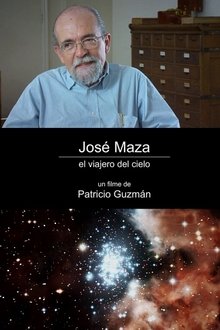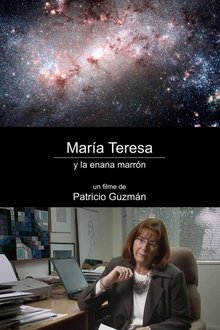A poetic documentary of its nature and of some rare people living on Gotska Sandön, an isolated island in the Baltic Sea, close to Ingmar Bergman’s home residence Fårö.
Related Movies

Fårö Document (1970)
Bergman interviews the locals of Fårö in this fascinating documentary. An expression of personal and political solidarity with the fellow inhabitants of his adopted home, the island of Fårö in the Baltic Sea, this documentary investigates the sometimes deleterious effects of the modern world on traditional farming and fishing communities. The young, especially, voice doubts about remaining in such a remote, quiet place.

Di sma undar jårdi spejlar och berättar (1986)
Documentary about the Swedish band Di sma undar jårdi mixed with recordings from one of their shows.

Bergmans Grandchild (2014)
Set in beautiful Faro, a young woman named Ida, feels lonely and loses all hope, believing death is looking for her. She soon comes up with a creative way of trying to cheat death itself.

Blue Sea (1956)
Lieutenants Johnny Waller and Ingvar Lund have been appointed captains of two torpedo boats.

Happy End (1999)
Happy End is a story about Lukas, a self-absorbed young man adrift who meets Marja, an experienced, older woman. Lukas dreams of becoming a rock star. He escapes the city to his father's holiday flat in Visby, a town on the Baltic island of Gotland. But the flat has been rented out to Marja, an eccentric 69-year-old writer determined to complete her memoirs. Nothing can hold her back, least of all a confused dreamer. Much against their will, a friendship slowly develops. But Marja harbors a secret, and when the truth emerges their friendship is put to the test. Their stay on Gotland takes an unexpected turn...

Stockholmsveckan (2015)
A bunch of young people travel to Gotland on their vacation - partying expected 24/7. But they get into trouble - with both the local population and a criminal gang.

Zombie-City Gotland (2008)
Tom Leimer arrives to the isle of Gotland, Sweden during the summer in order to find his old love Therese Sandström. She has, however, started a new life together with the upper-class-guy Karl von Silberhelm, and wishes no longer to know Tom because of his criminal past. A virus, turning people into living dead, breaks out on the isle. Tom makes his decision to try to rescue Therese - a choice that turns out to be more dangerous than he expected, since each who is infected hungers always for fresh human-flesh.

Killing Oswald (2013)
From the director of RFK Must Die, Killing Oswald explores the mystery of how and why John F. Kennedy and Lee Harvey Oswald were assassinated in 1963, tracing Oswald's strange transformation from US Marine radar operator in Japan, monitoring U2 spy planes over Russia; to 20-year-old Marxist defector, decamping to Moscow threatening to share military secrets with the KGB; to pro-Castro activist in New Orleans and self-proclaimed patsy in Dallas.

Clarkson: Supercar Showdown (2007)
For Jeremy Clarkson's new DVD he has traveled the Planet - from Spain via Strasbourg to Swindon - for the Supercar Showdown to beat them all. His aim is simple - find the ultimate Supercar. Jeremy starts a fight between the Ferrari 430 and Lamborghini Gallardo. The Gallardo's big cousin, the Murcielago, weighs in too. The Ferrari 599 GTB Fiorano struts its stuff and Audi's R8 faces up to the Porsche GT3 as special guest, Nurburgring-know-all Sabine Schmitz takes on The Stig. Jeremy also turns into a Formula 1 hero thanks to a Radical SR3. And has a fantastic time in the Aston Martin Vantage V8 Roadster. Plus there's a new kid on the block in the shape of the stunning Ascari A10. And the line-up would not be complete without the 1000 horsepower, 252 miles per hour Bugatti Veyron. Meanwhile, everything else explodes as Jeremy finds out if there is such a thing as "Too much" turbo power, a Renault Alpine A610 comes to the end of the road.

Clarkson: The Good The Bad The Ugly (2006)
This year Jezza takes the cream of Europes super-cars to the USA to pit them against America's finest, with highlights including a race up a mountain between a Cadillac Escalade, a Hummer H2 and a Range Rover, and a straight head-to-head race between a BMW Z4M and a Dodge Viper SRT 10. Along the way he also fills an old Jag and an old Buick with water, blows up a Harley-Davidson, has a Toyota Prius shot to pieces and outruns John Q. Law in an Ariel Atom...

Murch: Walter Murch on Editing (2007)
MURCH is a portrait of Academy Award winning editor and sound designer Walter Murch, whose unique approach to an invisible craft has fueled a visible following. As one of the original members of American Zoetrope Studios, he has taken part in the evolution of American cinema. Walter explains his unconventional approach to his craft, leading us through the productions and experiences that have influenced his methods and techniques in filmmaking.
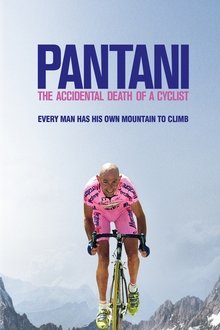
Pantani: The Accidental Death of a Cyclist (2014)
In 1998 Marco Pantani, the most flamboyant and popular cyclist of his era, won both the Tour de France and Giro d'Italia, a titanic feat of physical and mental endurance that no rider has repeated since. He was a hero to millions, the saviour of cycling following the doping scandals which threatened to destroy the sport. However, less than six years later, aged just 34, he died alone, in a cheap hotel room, from acute cocaine poisoning. He had been an addict for five years. This is the story of the tragic battles fought by the most important Italian cyclist of his generation; man verses mountain, athlete verses addiction, Marco Pantani verses himself.

Pelota (1983)
A documentary view of the Basque ball-game in which a small hard leather ball is hit against a wall. The film gives an impression of the game itself and of those who play it, not only the star performers (and the myths that surround them), but also those who just play in the streets and alleyways. The film sees the game it its cultural context and conveys the emotions and stories that are peculiar to the Basque country.
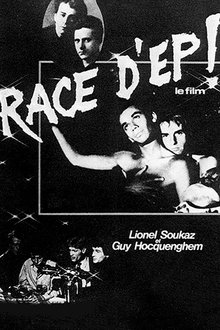
Race d'Ep! (1979)
"Race d’Ep!" (which literally translates to "Breed of Faggots") was made by the “father of queer theory,” Guy Hocquenghem, in collaboration with radical queer filmmaker and provocateur Lionel Soukaz. The film traces the history of modern homosexuality through the twentieth century, from early sexology and the nudes of Baron von Gloeden to gay liberation and cruising on the streets of Paris. Influenced by the groundbreaking work of Michel Foucault on the history of sexuality and reflecting the revolutionary queer activism of its day, "Race d’Ep!" is a shockingly frank, sex-filled experimental documentary about gay culture emerging from the shadows.
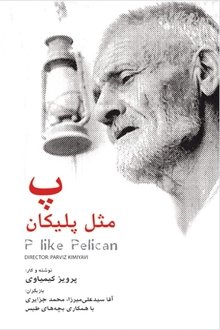
P for Pelican (1972)
An old hermit lives in a slum and wants to teach the alphabet to the children who regularly go there to play. When a child proposes he use the word “Pelican” for the letter ‘P’, the hermit goes to the nearby park to see this animal he has never heard of.
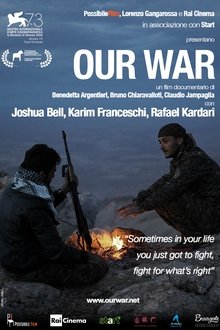
Our War (2016)
Since 2013 more than 30,000 fighters from all over the world have joined the troops of the self-proclaimed Islamic State (Daesh) in Syria. Fighting against them as part of the YPO (Popular Protection Command) in Rojava—in the north of Syria and prevalently Kurdish—are some hundreds of Westerners. This is the story of three of them: a former American marine, an Italian anti capitalist activist, and a Swedish bodyguard.

The Secret World of Lewis Carroll (2015)
It's a timeless classic of children's literature and the third most-quoted book in English after the Bible and Shakespeare. But what lies behind the extraordinary appeal of Alice's Adventures in Wonderland to generations of adults and children alike? To mark the 150th anniversary of its publication, this film explores the life and imagination of its author, the Reverend Charles Dodgson, better known as Lewis Carroll. Journalist Martha Kearney delves into the biographies of both Carroll himself and of the young girl, Alice Liddell, who inspired his most famous creation. She discusses the book with a range of experts, biographers and distinguished cultural figures - from actor Richard E Grant to children's author Philip Pullman - and explores with them the mystery of how a retiring, buttoned-up and meticulous mathematics don, who spent almost his entire life within the cloistered confines of Christ Church Oxford, was able to capture the world of childhood in such a captivating way.

A Capital Plan (1949)
This short documentary features a portrait of Ottawa in the mid-20th century, as the nascent Canadian capital grew with force but without direction. Street congestion, air pollution, and rail traffic were all the negative results of a city that had grown without being properly planned. French architect and urban designer Jacques Gréber stepped in to create a far-sighted plan for the future development of Ottawa. With tracks moved, factories relocated, and neighbourhoods redesigned as separate communities, Ottawa became the capital city of true beauty and dignity we know today.
